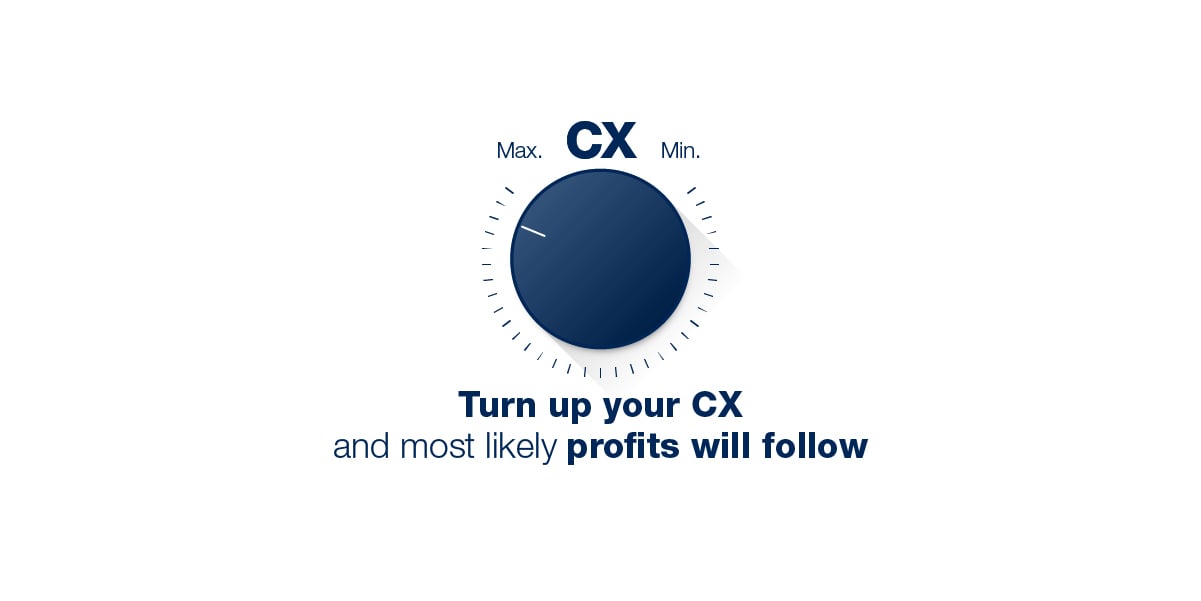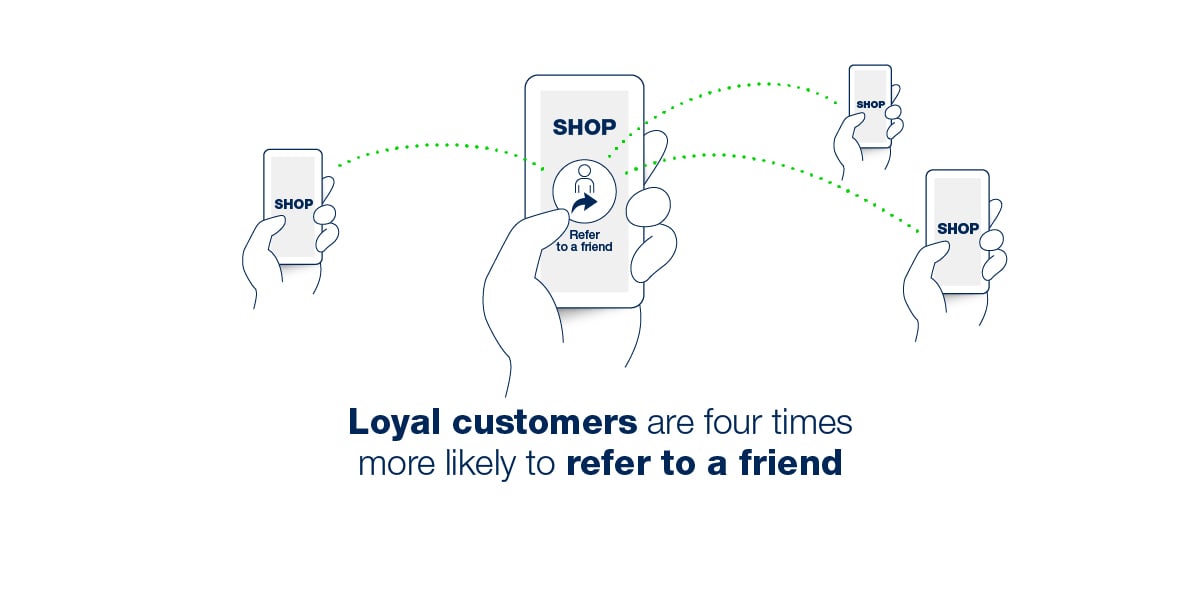For many years, marketers have lived by a particular mantra that many thought would always hold true: Content is King. There is still no denying the importance of good content as a major component of your marketing mix — without informative, engaging content, your target audience will not have the knowledge they need to influence their purchase decision.
But there is also something that holds greater significance in today’s buyer journey — the customer experience. All points along the buyer journey, and the content contained therein, must now be focused on delivering excellent CX. This is because at some point over the last decade, consumer behavior shifted from wanting cheap prices to desiring a memorable, positive customer experience from the brands they choose to do business with.

You might also like: "Why customer experience (CX) is important for your business"
Savvy marketers already know how important the customer experience is and have shifted gears to develop a CX-centric marketing strategy. But, as with any marketing strategy, there is always a need for continued analysis, adjustment, and adaptation to changes in consumer behavior. And that’s why customer experience trends have also shifted from one year to the next. Keeping up with the latest CX trends (and surpassing them when possible) is key to ensuring continued success and garnering a larger share of the target market.
Consider the following customer service trends that we are seeing take center stage and 2022. How many of them do your own CX strategy employ?
Customer experience trends 2022
The Omnichannel Customer Experience- Advanced AI in Customer Service
- The Mobile-First Approach
- VR and AR
- Interactive Sales Tools
- Personalized Experiences
- Data Security
- Communication Skills
- Instant Gratification
- A CX-Centric Approach
- Measuring the Customer Experience
- Proactive Service Strategies
1. The omnichannel customer experience
Providing excellent CX means tailoring the buyer journey to tell a clear, concise story representative of your brand and allow the buyer to move seamlessly from one touch point to the next. Whereas a standard marketing mix may allow for several channels of customer engagement at various points along the buyer journey, an omnichannel customer experience supports interaction via multiple channels at the same time.
What this means is that a customer can have access and utilize all channels, such as text, email, social media platforms, messaging, and others, to communicate with a brand without a break or loss of quality of service. This serves to unify the customer journey by creating seamless interaction at every point, regardless of the chosen channel at each point. Achieving this serves to improve customer support and the overall shopping experience.
2. Advanced AI in customer service
Chatbots have been around for quite some time, but in 2022 they are more sophisticated than ever and often deliver excellent customer support and guidance. Along with chatbots, virtual assistants also serve to provide an interactive voice with customers seeking help. In fact, many consumers, especially millenials, have reported that they are very satisfied with the engagement, information, and assistance provided by chatbots and virtual assistants, often more so than the customer service provided by actual humans.
Adding chatbot or virtual assistant support to your websites enables you to provide customer services in real-time, and the advanced AI allows for sophisticated assistance with little error.
You might also like: "3 customer experience examples the improve product engagement"
3. The mobile-first approach
Over the last several years marketers learned the importance of being mobile-friendly; creating mobile versions of a brand’s website so that the site could be easily viewed on mobile devices. Today’s studies reveal that many parts of the customer’s journey are actually completed on mobile devices, leading marketers to shift gears once again and adopt a mobile-first approach.
This entails tailoring a significant portion, if not all, of the buyer journey to be performed on mobile devices. Aligning your website, customer support platform, product videos, and other parts of your marketing mix to offer a seamless delivery on mobile devices serves to offer a better user experience for the 40 million Americans who are mobile-only users.
4. VR and AR
Today’s cutting-edge technology allows for marketers to integrate virtual reality and augmented reality into the marketing mix to provide a more enriching and memorable customer experience. By creating an immersive experience, a brand differentiates itself significantly from others in the industry. There are, of course, many applications for the use of VR and AR, but they are of particular value in the furniture, kitchen and bath, and living industry.
AR apps allow a consumer to better visualize how products will look, allowing for both a more exciting and influential part of the buyer journey. Combined with high-quality images and video, the possibilities for an amazing customer experience are quite substantial.
5. Interactive sales tools
Nearly 90% of marketers state that interactive sales tools, also referred to as interactive content, helps a brand stand out from the competition and serves to better convert potential customers into loyal customers. Interactive sales tools are particularly effective near the end of the sales funnel but can work at any point so long as properly aligned with other marketing content.

6. Personalized experiences
One way to truly enhance CX is to make it as personalized as possible for your customers. The one-size-marketing-fits-all is an extremely outdated concept and not bound to bring in favorable results. Today, there are many intuitive tools that can be employed to create a personalized experience for customers in several ways, such as recommending new products based on a purchase history to email marketing specially tailored to the individual. Even websites can be personalized to appear a certain way when a specific customer visits again.
7. Data security
It seems that nearly every day we hear a story of how another company suffered a data breach and the sensitive data of thousands of customers was stolen by hackers. Such an event can make a customer lose trust in a company pretty fast. That’s why many brands have been stepping up their cysbersecurity game and ensuring improved data privacy for their customers. Putting a strong cybersecurity plan in place shows potential and current customers that your brand is serious about keeping customer data private and safe, and also serves to improve trust in a brand.
8. Communication skills
Effective communication with the customer is a critical component of good customer service. The last thing you want is for your customer to leave a conversation frustrated, whether it is by phone, email, or in-person. To that end, customer service representatives are being better trained on their soft skills: listening, negotiation, creativity, being resourceful, attentiveness — essentially anything that not only shows the customer that you care about their problem, but also that you are happy to hear from them.
Too many brands still utilize a script in customer service that agents will follow to the letter, often sounding like a robot. Once a customer hears the same, standard verbiage protocol, they can be instantly annoyed. Learning to provide customer service with enthusiasm and the ability to improvise the script so that it doesn’t seem as though the agent is reading monotonously from a page in front of them serves to build a better relationship with the customer and ultimately results in a more rewarding experience.
9. Instant gratification
Customers don’t like having to waste time searching for information about your brand, products, or services. They also don’t like to wait too long for products they purchase. Anything that can be done to get a product shipped as quickly as possible to a customer, or anything to help speed the checkout process along in a brick and mortar store, can potentially set you apart from your competitors. Streamlining the checkout process, retaining customer information so that many steps can be skipped for subsequent purchases, and anything else that essentially makes things more convenient for the customer is an important and necessary step in being an excellent service provider and improving CX.
10. A CX-centric approach
In 2022 we see many brands shifting their marketing strategies to further encompass the customer experience — tailoring all of the strategies in their marketing mix to better reflect providing an excellent customer experience. All of the above trends can play a role in a cx-centric marketing strategy, with the ultimate goal of making the customers feel important and that they are catered to every step of the way.
11. Measuring the customer experience
Understanding how well you are doing at providing a good customer experience is just as important for continued future success, a concept many brands still don’t fully grasp. But the trend toward advanced analysis of the customer experience is rapidly growing, serving to help many brands better fine-tune their CX marketing by discovering what areas are working and which need improvement. There are many common key performance indicators that can be measured, such as customer satisfaction, and more KPIs specific to your industry. Tracking metrics and learning from the results is a trend all brands should be leaning towards, before competitors that are already doing it pass them by in the race to better CX.
12. Proactive service strategies
With plenty of analytical data in hand, a brand can be well equipped to provide preemptive and proactive services — services that can be specially designed to target a customer’s needs and wants before the customer even knows what they need and want. This creates a personalized customer experience that really resonates with the individual and improves customer loyalty.
In conclusion
Today’s brands leading the CX revolution know that it is all about providing an outstanding customer experience at every point along the buyer journey. While new trends may develop and others may fade away in the coming years, the ultimate purpose is still the same — focus on the customer, always. Sometimes, this may mean focusing more on the customer than you do on profits — but your customers will recognize this, and the profits will flow just the same as a result.
As you can see from the above trends, a combination of new and old school strategies can be used in conjunction to deliver excellent CX — advanced technology to provide immersive experiences to simply just talking to your customers and making them feel valued both result in success and serve to improve customer loyalty.
And while all of these trends are currently particularly effective, a large part of being able to put all of the above strategies into practice for optimal potential benefit is actually understanding the customer. By better understanding your target audience, you can better deliver the experience they seek. But don’t rely on any one trend too much — except perhaps the one where you analyze the customer experience. This is a trend that is likely to stick around, and those who can learn from the data they collect will be able to master the CX and ensure a larger share of the target market.














